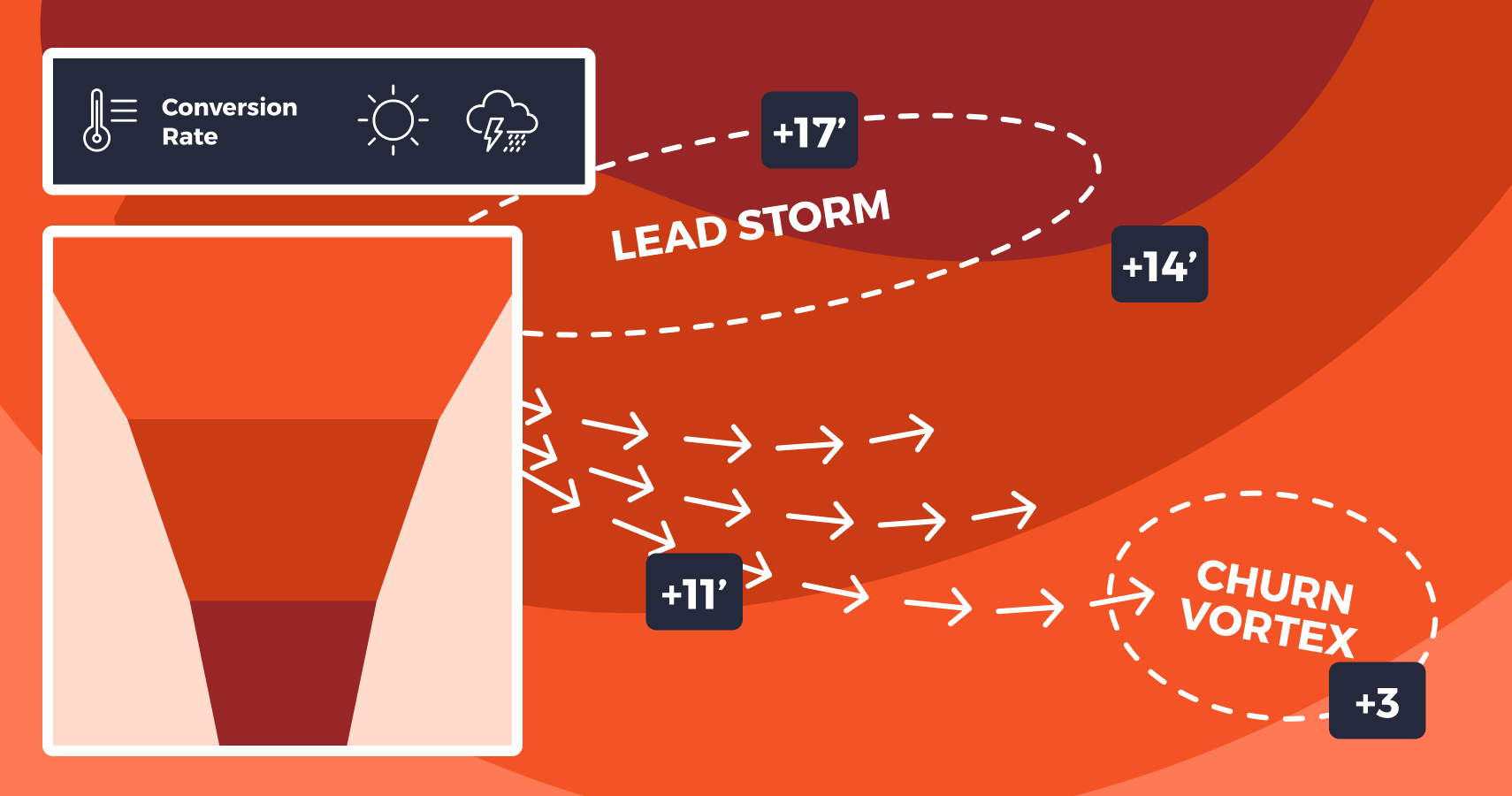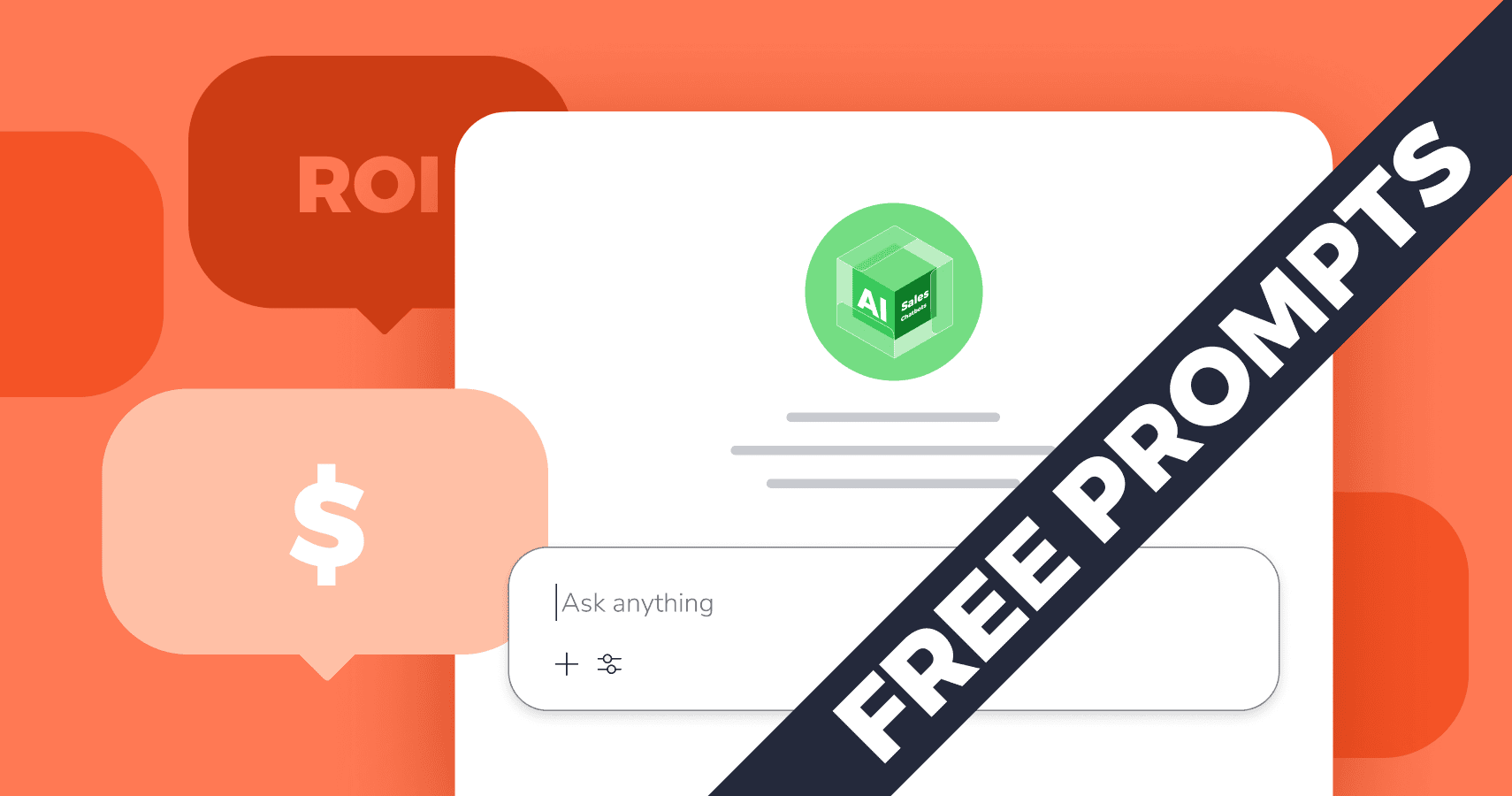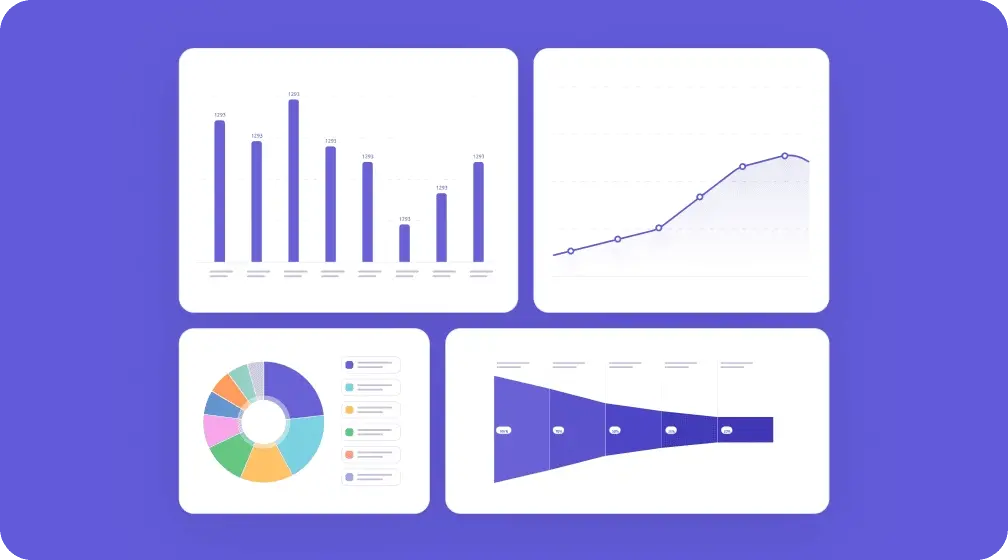How to shorten the sales cycle in 9 easy steps

Table of Contents:
- Spot bottlenecks, before you start optimizing
- 9 strategies for shortening your sales cycle
- Strategy #1 Qualify leads accurately
- Strategy #2 Map out stakeholders for each company
- Strategy #3 Create a sense of urgency
- Strategy #4 Respond to key questions sooner rather than later
- Strategy #5 Provide high-impact sales enablement assets
- Strategy #6 Help leads stay focused on your key message
- Strategy #7 Streamline the decision-making process
- Strategy #8 Build trust and credibility quickly
- Strategy #9 Risk mitigation and objection handling
- Common objections to shortening the sales cycle
- How to reduce sales cycle length using a systematic approach
In B2B sales, long cycles are often seen as inevitable. Multiple stakeholders, layered approvals, shifting priorities – it’s all part of the territory. And while some deals will naturally take time, that doesn’t mean your hands are tied.
The truth is, most sales cycles aren’t long because buyers need more time. They’re long because the process is bloated. Unqualified leads, unclear messaging, slow follow-ups, and internal bottlenecks all add friction that stalls otherwise motivated prospects.
This article isn’t about shortcuts or pressure tactics. It’s about how to shorten the sales cycle by making it smoother. By qualifying better, communicating clearly, and removing the obstacles that waste your time (and your buyer’s). Because when the right person hears the right message at the right time, sales don’t need to drag. Here’s how smart sellers are doing just that.
Spot bottlenecks, before you start optimizing
Before you experiment with new tactics, there’s one question you need to ask: Where exactly is the sales cycle breaking down?
Too often, teams try to optimize without knowing what they’re fixing. But if you want to shorten the sales cycle in a meaningful way, you need more than gut feeling; you need data.
That’s where Livespace comes in.
Livespace helps you pinpoint exactly where leads drop off, where your team loses the most time, and what factors are slowing down your conversions. Whether it’s long qualification times, bottlenecks in proposal stages, or slow follow-ups, the platform brings it all into focus.
With detailed reports and customizable sales funnels, you can:
- Track key metrics like time to close, lead-to-opportunity conversion rates, and reasons for deal loss.
- Set smart targets for each rep – meetings booked, references collected, budgets hit – and monitor progress in real-time.
- Spot patterns in performance and act quickly to course-correct.
When you know what’s working (and what isn’t), you can make faster, smarter decisions. You can streamline how your team works, improve consistency, and cut out the inefficiencies holding you back.
9 strategies for shortening your sales cycle
Before we discuss the specific tactics, it might be worth taking a step back and asking yourself: How do you know whether your sales cycle length is above average?
To help answer that, we looked at data from 1,200 Livespace customers across 17 different industries – mainly small to mid-sized B2B companies. For our B2B Sales Benchmark Report, we analyzed data spanning from early 2022 through the end of 2024 to make sure we weren’t seeing seasonal spikes or one-off anomalies. These numbers give a solid estimate:
On average, the B2B sales cycle takes about 44 days to close.
Of course, it’s always smart to compare this with your own historical data and, if available, industry-specific averages. That context will give you a clearer picture of where you stand, and whether there’s room (or a need) to speed things up.
If you’re seeing a longer than average sales cycle, then there are a variety of factors that could be in play – from delays in your follow-ups to lack of internal approvals. We discuss how to handle these and other obstacles below.
Strategy #1 Qualify leads accurately
If you’re serious about shortening your sales cycle, start by getting brutally honest about who belongs in your funnel. Misaligned leads, those who don’t fit your sales persona or simply aren’t ready will slow everything down. Worse, they’ll drain your team’s energy and kill your conversion rates.
In other words: qualify better, close faster.
This isn’t theory – it’s exactly what Robin Luo, CEO and founder of ICRFQ, has seen work in practice. “In the B2B electronics space, one powerful tactic we’ve embraced… is hyper-focused qualification,” he explains. The team at ICRFQ tightened their lead criteria and shifted focus toward deeper discovery at the top of the funnel. The result? A shorter sales cycle by up to 30% and stronger client relationships. “It’s quality over quantity, indeed,” says Luo.
That same philosophy plays out in very different industries. Riley Westbrook, co-founder of Valor Coffee, recalls how chasing lukewarm leads slowed things down in their wholesale program. “We’d end up spending time on people who were never going to move forward,” he says. The fix was simple: upfront clarity. Now, every sales conversation starts with two questions – what the lead’s current coffee setup looks like, and why they’re considering switching. “It cut our sales cycle by about a third,” Westbrook says. “No pressure tactics, just clarity up front.”
What these stories have in common is a commitment to fast, honest qualification. That doesn’t mean pushing leads away, it means asking the right questions early and being okay with walking away if it’s not a fit.
One Reddit user put it succinctly: “If the pain is real, it should all move quite fast – as long as you’re in front of the proper decision maker.”
Strategy #2 Map out stakeholders for each company
It’s tempting to celebrate too early when a lead shows interest. But interest from the wrong person won’t close a deal.
A common sales pitfall? Single-threading – talking to just one contact and assuming they’ll champion the deal through. In reality, especially in larger companies, buying decisions rarely rest with just one person. So, if you’re only speaking to someone who can’t say “yes,” you’re setting yourself up for a slow (and likely unsuccessful) cycle.
Matt Redler, founder of Za-zu, learned this the hard way. “Most B2B deals die because you’re talking to one person who can’t pull the trigger,” he says. After losing multiple “guaranteed” deals when his lone contact went dark, he changed his approach. He began mapping stakeholders from the start, identifying the decision-maker, budget holder, end users, and internal champions.
“I’d create touchpoints with 3–4 people minimum before presenting,” Redler explains. The results were immediate: their average sales cycle shrank from 4.2 months to just 2.8. “Turns out multiple relationships create internal momentum that accelerates everything,” he adds. “Single-threading is playing sales on hard mode.”
Strategy #3 Create a sense of urgency
One could say it’s about the classic “striking the iron when it’s hot”; but we’d also add striking if it’s hot. There’s a great thread on Reddit, where one salesperson said what they do is move from scheduling meetings and demos from further into the future like next week to “let’s meet tomorrow”.
They say that if the person doesn’t have a legitimate reason to push the meeting so far out, it means that there was “no energy in the deal”. This way, they were able to shorten their sales cycle by 30%.
Strategy #4 Respond to key questions sooner rather than later
If a lead asks for something like pricing, and your instinct is to hold off because “it’s too early,” it might be worth reconsidering. Delaying core information like cost, timelines, or what’s included in the service can actually slow things down. Or even worse, frustrate the lead enough that they walk away.
There are plenty of studies proving that, if you answer a request for a quote within five minutes from receiving it, the chances for closing the sale become exponentially higher. From our experience, if you can’t reach a lead within these five minutes or so, getting a hold of them usually takes days and stretches out the sales cycle. Generally speaking, the faster the lead response time, the shorter your cycle.
Jason Rowe, Director and Founder of Hello Electrical, also experiences this firsthand. As someone who handles sales daily in his own company, he realized that dragging out conversations around key details was costing him business.
“The one tactic that has truly worked did wonders for us,” Rowe shared, “is providing extremely detailed, upfront quotes and explaining every step of the process immediately.” He came to this after noticing that deals, especially bigger residential and commercial ones, tended to stall when clients lacked clarity.
His fix? Right after an initial visit or deep conversation, his team would send out a comprehensive quote with costs, project scope, timeline, and answers to typical client concerns all included. This approach didn’t just build trust, but cut back on back-and-forth and helped clients make faster, more confident decisions.
So how do you identify the moment when it’s time to stop building rapport and start talking business, like Rowe did?
A tool like Livespace can help. By tracking where leads tend to stall or drop off in your pipeline, you can pinpoint exactly where key information might be missing and act on it. Whether it’s sending a quote earlier or addressing common objections sooner, Livespace makes it easier to spot and solve the bottlenecks that slow your sales cycle down.
Strategy #5 Provide high-impact sales enablement assets
Right after you’ve addressed key customer questions early, there’s also an opportunity to go one step further, i.e., help buyers see the value for themselves. That’s where well-crafted sales enablement assets come in.
Andrew Lokenauth, Founder of TheFinanceNewsletter.com and operator of a fractional CFO advisory firm, took this idea to heart. He noticed that many CFOs and CEOs got bogged down in back-and-forth about ROI. His solution to how to shorten the sales cycle? A simple but powerful financial impact calculator.
As Lokenauth explained, his prospects enter a few figures like revenue, expenses, growth targets, and the spreadsheet instantly shows the potential financial outcomes of working with his firm. From improved cash flow to cost savings, it shifts the conversation from “what the service does” to “what it delivers”.
“The numbers did the selling for me,” Lokenauth said. His average sales cycle dropped from over four months to just six weeks. One manufacturing CEO even signed after two meetings – “$300K in projected annual benefit tends to have that effect,” he concluded.
That same principle of helping buyers connect the dots faster also drove results for Katie Breaker, Director of Sales and Marketing at BirdieBall Golf. Her team sells to schools, military programs, coaches, and facilities. They used to see major delays between the first inquiry and a meaningful sales conversation.
Breaker decided to send targeted video demos of how the product works right after the first touchpoint. “It gave [our leads] answers fast and made the next step feel obvious,” Breaker shared. Not only did it slash their sales cycle in half, but it also saved her team hours every week.
Strategy #6 Help leads stay focused on your key message
If you’re wondering how to shorten the sales cycle, start by asking: Is my message actually clear?
You’ve probably landed on a company’s website before and asked yourself, “Wait, what do they actually do?”. If your message isn’t clear, your prospect isn’t going to dig around to figure it out. They’ll just move on.
The same principle applies in sales conversations. If your pitch is all over the place or your product offering feels like a buffet menu, you’re making the decision harder, not easier. And that confusion slows everything down.
Caitlin Agnew-Francis, Commercial Sales Manager at Desky, saw this firsthand. Desky sells ergonomic office furniture, but at one point, their pitch was doing too much. “We had several clients who were feeling overloaded with information and possibilities,” she explains. Rather than laying out the full catalog, Caitlin shifted her approach: she started every call with a structured needs assessment to pinpoint what the client truly needed – and then focused only on that.
“I concentrated on figuring out their precise needs early on so I could reduce our answer to the necessities,” she says. That clarity paid off: fewer meetings, less back-and-forth, and a sales cycle shortened by nearly 30%. Better yet, clients appreciated the no-nonsense process and converted at higher rates.
Don’t flood leads with options, guide them to a decision. Keep your message simple, your solution focused, and your communication grounded in their actual needs. A clear path forward makes it easier to say “yes” (and much faster, too).
Strategy #7 Streamline the decision-making process
One of the most overlooked strategies when thinking about how to reduce sales cycle is this: make it easier to say “yes.”
Sales cycles don’t just slow down because of the buyer. Sometimes, it’s the seller creating roadblocks – long contracts, vague pricing, too many steps. Every layer of complexity adds another opportunity for hesitation, confusion, or internal delays.
Allan Hou, Sales Director at TSL Australia, saw this in action within the logistics industry. “We used to hold back exact prices until we had more details,” he says. It made sense on paper – shipping costs can vary but in practice, it dragged out the sales process.
What did they do? Offered full transparency, early on. Allan’s team started offering a range of pricing scenarios right from the first conversation. “While some of the figures weren’t set in stone, it gave prospects enough to work with and helped speed up their internal approvals,” he explains.
The results were clear: fewer emails, faster decisions, and quicker commitments. “Being upfront with pricing early on earns trust and moves things along much faster,” Allan adds.
It’s not just pricing that needs streamlining. If your contract is twenty pages long and packed with legal jargon, it’s going to sit on someone’s desk for a week, maybe more. Tools like PandaDoc can help cut the clutter and present contracts that are easy to review and approve.
Strategy #8 Build trust and credibility quickly
At the heart of effective selling is one simple truth – buyers need to trust you. And if you’re figuring out how to shorten the sales cycle, this is the lever you can’t afford to ignore.
The longer a buyer spends second-guessing your credibility, the slower the deal. That’s why social proof like testimonials, reviews, even client logos isn’t just a nice touch. It’s a strategic advantage. If your site has no real voices backing you up, prospects won’t say it out loud, but they’ll hesitate. And hesitation is your enemy.
Lee Smith, founder of SalesFuel, took this concept one step further. “We started bringing live dashboards and real-time data from active client campaigns into our sales calls,” he says. Forget polished pitch decks, his team shared raw backend metrics to prove results on the spot. “A prospect once told me, ‘I just want to see the truth.’ That stuck with me.” By showing real performance, trust went up, and decision-making sped up. No back-and-forth. No drawn-out vetting process.
Eric Turney, Sales and Marketing Director at The Monterey Company, found his own version of this. Selling branded merchandise isn’t always urgent for buyers so projects often get pushed to the back burner. How to solve it? Start the artwork immediately after qualifying the lead.
“Instead of quoting first and waiting days to show a mock-up, we did both at once,” he says. This small shift created what he calls a “trust spark.” Clients saw effort, quality, and momentum – all before being asked to commit. Conversions went up, and the ROI made the case for scaling the tactic.
Asawar Ali, Marketing Manager at Cadillac Accessory, focused on the first conversation. He realized the traditional discovery call – starting with broad questions – was costing time and attention. So he flipped it. “I began leading with three tailored solutions right out of the gate,” based on the buyer’s exact situation. That single adjustment cut their sales cycle by 38%. “It eliminates the ‘let me think about it’ objection,” Ali explains. “They see the value immediately.”
Strategy #9 Risk mitigation and objection handling
One of the most effective answers to how to reduce sales cycle length is to address concerns before they’re even raised. Instead of waiting for prospects to bring up objections around budget, implementation, or integration, tackling them head-on from the start can eliminate unnecessary friction and build confidence early.
James Myers, Sales Director and Office Manager at VINEVIDA, tried this out firsthand. He told us that in the past, deals frequently stalled due to predictable concerns like budget or integration issues. “So, instead of reacting to objections, I decided to preempt them,” he explained.
Myers began by analyzing past CRM data to identify the most common blockers, then worked that information into the earliest stages of communication.
“If ‘implementation time’ was a common worry, we’d address it upfront in the first call,” he said. “Prospects gained confidence from our foresight.”
The results were fewer drawn-out email threads, faster approvals, and a clear drop in sales cycle length. “This strategy significantly reduced lengthy back-and-forth exchanges,” Myers noted, “and led to smoother negotiations across the board.”
With a tool like Livespace, you can spot similar patterns in your own pipeline and pinpoint where and why deals tend to slow down. This will inspire ideas on how you can resolve objections before they ever get in the way.
Common objections to shortening the sales cycle
While shortening the sales cycle is, in itself, a positive change for the organization, it’s not uncommon to encounter internal resistance from the sales team. One frequent concern is that shortening the cycle will simply mean working twice as hard. Reps may worry they’ll be expected to squeeze more calls, follow-ups, and admin into an already packed day.
In reality, it’s not about piling on pressure, but optimizing processes. With the right tools in place, much of the manual, repetitive work can be automated, freeing up time and energy for higher-impact tasks. It’s important to communicate that shortening the sales cycle can actually mean less busywork, not more.
Another objection comes from a very valid place: the fear that rushing prospects will backfire. Some reps worry that pushing for quicker follow-ups or decisions might make leads feel pressured, especially in deals that involve complex buying committees, internal approvals, or budget planning.
In these cases, it’s important to listen to what your sales team is saying. After all, they know their audience well. If they see a real need for a longer consideration window, it may be better to focus on streamlining other parts of the process, like qualification, discovery, or proposal generation, rather than accelerating the decision stage. The goal isn’t speed at all costs, but rather removing unnecessary friction while respecting how your buyers buy.
How to reduce sales cycle length using a systematic approach
As we’ve seen, there’s no one-size-fits-all solution for shortening the sales cycle, as it all depends on what’s slowing things down in the first place. Sometimes, it’s unnecessary internal steps or manual work that clogs the pipeline. Other times, it’s delayed follow-ups when a lead is already showing strong intent.
The key is to spot the real bottlenecks and fix those first. Whether it’s by sharing information earlier, adding high-impact sales assets, or proactively addressing objections, the most effective changes are the ones that solve your specific points of friction.
If you’re ready to take steps to accelerate your sales cycle, start by reading our comprehensive sales process guide, which explains how to build a more systematic approach.
For B2B sales managers looking for more advanced tactics to close deals faster, we also recommend watching our free webinar, One Last Push: Strategies for Closing Deals Faster. It’s a deep-dive into high-leverage closing techniques, perfect for teams that want to finish strong.
Other posts

The Beginner’s Guide to Sales Forecasting (For Sales Directors & Managers)

CRM reporting: The beginner’s guide for sales managers







